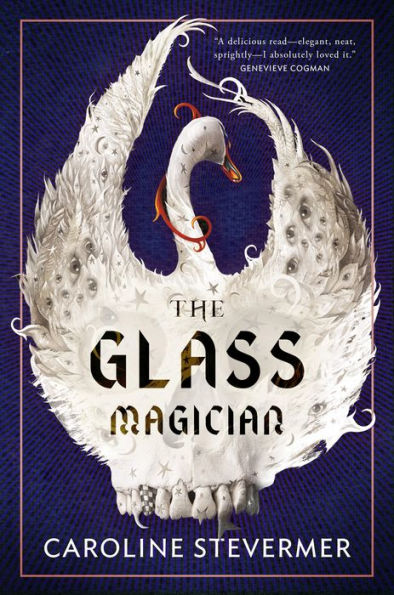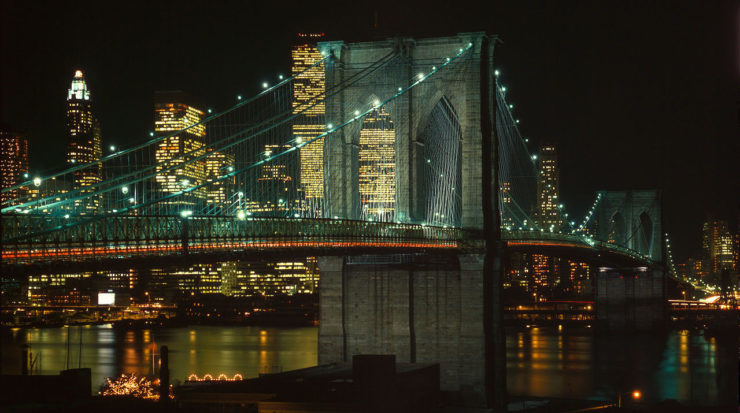Thalia Cutler, in The Glass Magician, is a professional stage magician on the vaudeville circuit. Onstage she plays the Lady of the Lake, who produces doves from thin air — actually the pigeon-squeezer corset beneath her costume. Offstage she deals with rival magic acts and cynical theater managers. She travels from the theater district to the splendors of Riverside Park and the Hudson River via a Hell’s Kitchen boarding house.
I had a wonderful time doing research for The Glass Magician. Although I am at a far remove from New York City in 1905 in both time and space, it wasn’t hard to imagine how people might react to the advent of new technology or new knowledge about themselves.
Some of my college friends grew up with their idea of New York City formed by the novels of Henry James and Edith Wharton, or at least the New Yorker.
Full disclosure: Mine was formed by Mad magazine.
New York City was where all the important things came from: news, entertainment, and literature. Even superhero comics came from New York. From the start, I knew Gotham City and Metropolis weren’t real. But New York City was. New York City was the height of reality. It had legends and landmarks. You could go there.
Many fantasy novels are set in New York City. I will only mention my five particular favorites here.
Ordinary mortals think New York Outside is the only one there is. They’re wrong. There are at least two New Yorks, and probably more, sharing the same space, but not exactly the same reality. I live in New York Between. —Delia Sherman, Changeling
I love Delia Sherman’s New York Between middle-grade novels. Changeling, the first, demonstrates and defines the rich folklore, old and new, found in the New York City I knew through popular culture. This definition, from Changeling’s glossary, is pertinent to The Glass Magician: Swan maidens (Northern Europe): Swans who are girls; girls who are swans. Take your pick. If you can hide their feather cloaks, they have to marry you. My advice? Don’t bother. They have bad tempers and they bite. No feather cloak in The Glass Magician (and no biting), but the high-buttoned shoe fits.
Changeling’s protagonist, Neef, is sent on a mission which puts her in conflict with the geniuses of New York Between, including the Producer of Broadway. (I particularly recommend the Producer.) Neef not only finds the child for whom she was traded at birth, a Park fairy raised in New York Outside, but she outwits the Green Lady of Central Park to get them each safely back to their respective New Yorks.
However, there is far more to New York City than Manhattan Island. In 2015, at WisCon, in Madison, Wisconsin, I was lucky enough to hear Daniel Jose Older read aloud from the opening of his novel, Half-Resurrection Blues:
It’s just past eleven p.m. on December thirty-first–that dizzy in-between time when we’re not quite here but not yet there–and hip, young white kids crowd the trendy streets of Park Slope, Brooklyn.Their pockmarked faces flash a theatrical array of expressions, everything from regret to ecstasy to total abandon, but I’m not fooled: they’re bored out of their minds. I can tell because I’m dead–well, partially dead anyway. When you straddle a fine line like the one between life and death, let’s just say you can tell certain things about people. —Daniel Jose Older, Half-Resurrection Blues.
I was enchanted, and I am still enchanted by Older’s New York City, wider and wilder than any I’ve experienced.
Wider and wildest of all is the New York City I’ve glimpsed in the short story “The City Born Great,” by N. K. Jemisin.
This is the lesson: Great cities are like any other living things, being born and maturing and wearying and dying in their turn.
Duh, right? Everyone who’s visited a real city feels that, one way or another. All those rural people who hate cities are afraid of something legit; cities really are different. —N. K. Jemisin, “The City Born Great.”
Full disclosure. As I am writing this before its release date, I have not yet read N. K. Jemisin’s forthcoming novel, The City We Became. I’m mentioning the short story here because I eagerly anticipate the novel. I expect to be as convinced and compelled by her New York in all its boroughs, not merely Manhattan, embodied.
Since I grew up on a farm, I was raised a rural person, but I’m not one of those who hates cities. (I could hardly wait to be old enough move to one.) But I fully agree. Cities are different.
Beyond the five boroughs, So You Want To Be A Wizard, the first of the Young Wizards fantasy novels by Diane Duane, begins in suburban Long Island. Nita, Kit, and their families and friends live in a far larger world, but New York City and its environs are lovingly portrayed. I’m delighted to see there are more Young Wizards titles than those I’ve read. I’ll enjoy revisiting Duane’s splendidly imagined worlds in the novels new to me.
Then there are the novels in which New York City is given another name. In my opinion, the finest of these is Swordspoint, by Ellen Kushner, (the first of the Tremontaine series in publication order). Every syllable is well-considered, every word is polished, and even the page breaks sing. Full disclosure: Ellen Kushner is one of my oldest and dearest friends. That’s why I know that the setting of Swordspoint is comprised of more places than New York City alone, but to me it will always be New York City-adjacent.
Cities are different, as N.K. Jemisin shows us. New York City, eternally in motion, different daily even from its previous self, most of all.
Buy the Book


The Glass Magician
Caroline Stevermer lives in Minneapolis, Minnesota, where she writes fantasy novels and shovels snow. She loves New York City from afar.










